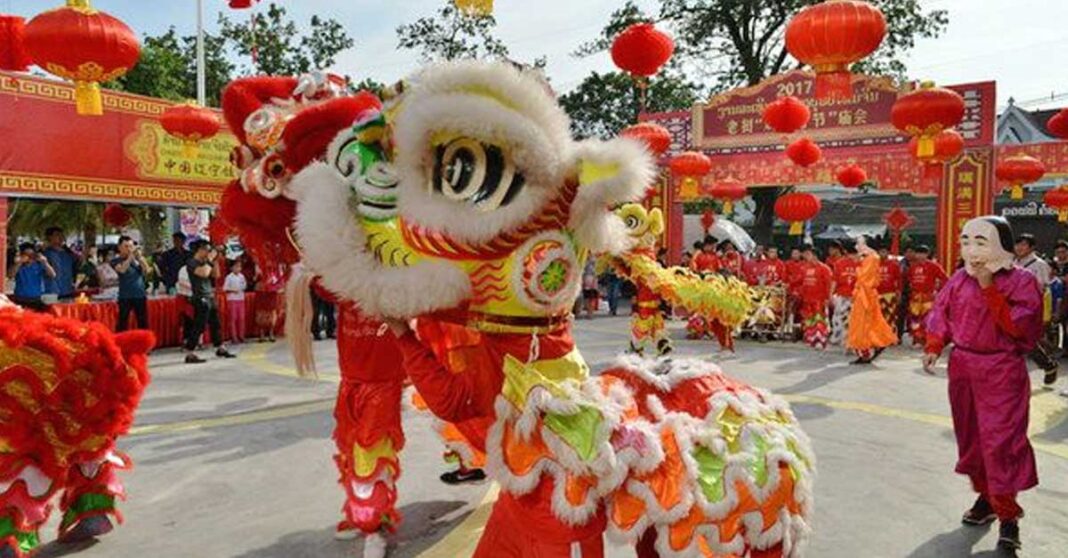As the Lunar New Year approaches, the streets of Asian countries like China, Vietnam, and South Korea buzz with vibrant celebrations, including majestic dragon dances, mesmerizing lantern festivals, and joyous Seollal festivities, all brimming with cultural richness and tradition.
The festivities commence with the first new moon of the lunar calendar and conclude 15 days later with the first full moon. This year, the festivities will commence on 10 February, to welcome a new year of the dragon, according to the Chinese zodiac.
The Chinese zodiac comprises 12 animals, namely the rat, ox, tiger, rabbit, dragon, snake, horse, goat, monkey, rooster, dog, and pig, representing cycles of time. According to legend, before departing from Earth, a deity summoned all animals for a farewell, with only 12 responding. In the Vietnamese zodiac, differences exist, with the cat and buffalo replacing the rabbit and ox, respectively.
As the New Year weekend approaches, throughout Laos, communities and individuals from Chinese and Vietnamese backgrounds are preparing for the celebrations.
Chinese Lunar New Year Celebrating with Fervor in Laos
Chinese communities thrive in Laos, with many Lao families actively participating in and embracing the festivities annually. This year, in late January, the China Cultural Center in Vientiane hosted an event to celebrate the Chinese Lunar New Year in advance, attended by dignitaries from both Laos and China. The event featured various celebratory activities, including lion dances, firecrackers, food, and traditional folk music.
In another major event, the Laos-China Railway, in collaboration with Chinese GuangXi TV, also hosted a Chinese New Year-themed moving concert titled the “Train Music Festival” to celebrate and promote cultural exchanges between Laos and China. The concert showcased performances of Lao-Chinese traditional arts and dances by Lao youth students, as well as singers and artists aboard the train, drawing a significant number of Chinese passengers.
‘Tet Festival’ Brings Joy and Tradition
Meanwhile, Vietnamese communities in Laos are also celebrating the Lunar New Year, known in Vietnam as the “Tet Festival,” with several groups and families organizing events to mark the occasion.
In early February, the Nguyen Du Lao-Vietnamese bilingual school in Vientiane also organized an event to celebrate the Vietnamese Lunar New Year, which was attended by officials from both countries. The celebration featured traditional Vietnamese Tet dishes and musical performances, highlighting the importance of the event in fostering Vietnamese cultural values among Lao students and sharing them with international friends.
In Vietnam, the “Tet” is considered a significant celebration as it is marked by family reunions, ancestor veneration, and prayers for luck, prosperity, and health.
South Korea: ‘Seollal’ Brings Family Together
This particular holiday is not limited to only Chinese and Vietnamese communities, as South Koreans both in their country and in Laos also embrace their version known as “Seollal.”
The essence of the festival is to celebrate the new year as a way to honor ancestor spirits and bring in a bountiful harvest. These customs were carried on throughout generations and have changed, but the main idea remains. The festival is deeply intertwined with Korean folklore and the lunar calendar.
While Christmas in South Korea revolves around hanging out with friends and spending precious time with partners, Seollal is more of a family-based celebration.
A distinctive feature of Seollal is the practice of “Sabae,” where younger generations kneel and bow before their elders to show respect and offer well wishes for the new year. This tradition, often performed while dressed in traditional attire known as “hanbok,” embodies the essence of filial piety and reverence for elders.
Following the Sabae ritual, elders customarily offer monetary gifts, known as “sabeatdon,” to the younger members of the family, along with blessings for their future endeavors.
Beyond Sabae, Seollal is filled with various activities for families to enjoy together. From exchanging gifts and indulging in dumpling preparations to partaking in fortune-telling, kite flying, and playing traditional board games.
As the Lunar New Year approaches, the celebrations in China, Vietnam, and South Korea bring communities together in festivities rich with cultural traditions. From dragon dances in China to the Tet Festival in Vietnam and the familial bonds of Seollal in South Korea, these traditions highlight the significance of honoring heritage and ushering in prosperity for the year ahead.



